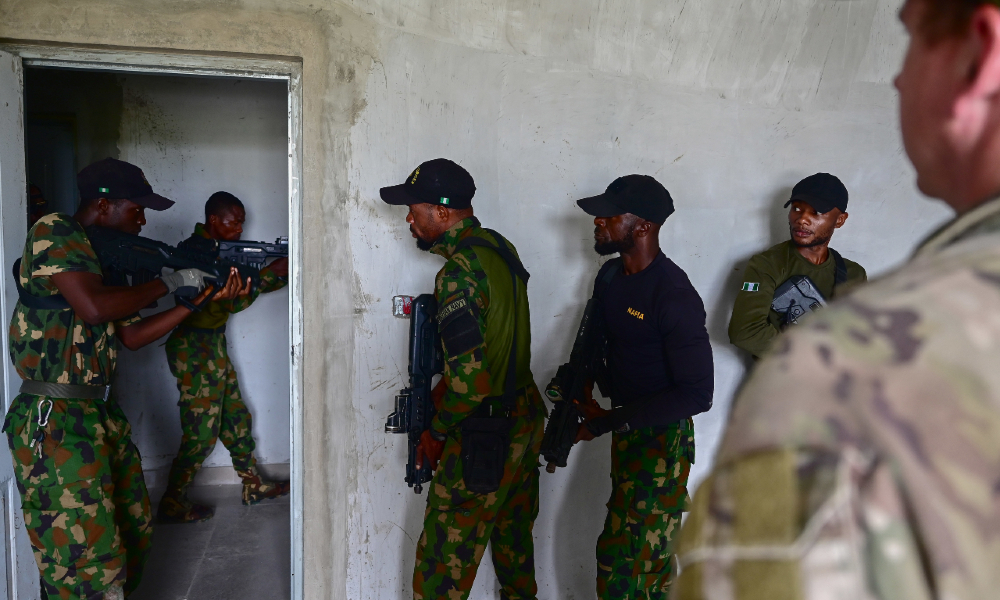The Administration's New Electronics Ban Is a Case Study in Credibility
The first news of the new U.S. ban on large electronics in the passenger cabins of flights from 10 airports in the Middle East broke in the form of a tweet from Royal Jordanian Airlines on Monday. Without immediate corroboration from the Department of Homeland Security, at least one analyst wondered if the airline’s account had been hacked.
Published by The Lawfare Institute
in Cooperation With

The first news of the new U.S. ban on large electronics in the passenger cabins of flights from 10 airports in the Middle East broke in the form of a tweet from Royal Jordanian Airlines on Monday. Without immediate corroboration from the Department of Homeland Security, at least one analyst wondered if the airline’s account had been hacked. The apparent targeting of foreign airlines led others to speculate that the policy was a protectionist racket to drive business to U.S. airlines; one former administration official speaking to BuzzFeed noted its targeting of Middle Eastern airports and tied it to the president’s executive order, calling it “a Muslim ban by a thousand cuts.” The next day, DHS clarified the policy: The United States has demanded that all electronic devices larger than a cell phone must be kept in checked luggage and not brought into the passenger cabin on flights to the United States departing from 10 airports in the Middle East. The British government has since signed on to a similar restriction as well.
The U.S. government has now explained what the policy is, but not why it was implemented. And the administration can’t seem to get its story straight.
First there’s the rationale reported by the New York Times on Tuesday. U.S. officials told the Times that the policy was based on intelligence reports that the Islamic State was planning to smuggle explosives disguised as laptop batteries aboard a flight. “The targeting of a jetliner using explosives shows how the Islamic State, which has long worked to inspire terrorist attacks, is trying to compete with groups like Al Qaeda’s affiliate in Yemen,” the Times reported. The policy was being implemented in response to recent “intelligence of something possibly planned,” Rep. Peter King told the Times, but administration officials “maintained that the new restrictions did not signal a credible, specific threat of an imminent attack.”
The claim that the policy was based on intelligence from the Yemen raid would be news; so far, despite repeated claims from the Trump administration, intelligence officials have said that the raid produced no new findings.
That differs from what a U.S. official told CNN. According to CNN’s reporting, the policy has been implemented in response to intelligence that al-Qaeda in the Arabian Peninsula (AQAP) is plotting to smuggle a bomb aboard a plane in a laptop. One CNN source said new intelligence relevant to the threat was gathered during the deadly January 29 raid by U.S. and Emirati Special Operations Forces on an AQAP site in Yemen, though another said that concern about the threat of bombs disguised as electronics has been on DHS’s radar for months. AQAP has a track record of developing explosives that can be hidden and smuggled aboard aircraft—it notably hid bombs in printer cartridges and tried to ship them to the United States in 2010. The claim that the policy was based on intelligence from the Yemen raid would be news; so far, despite repeated claims from the Trump administration, intelligence officials have said that the raid produced no new findings.
Notably, BuzzFeed’s reporting states that intelligence from the Yemen raid was not a source for the new policy: “It does not appear intelligence gathered during the Jan. 29 raid on a suspected al-Qaeda compound in Yemen was part of the US assessment as officials began discussing the rising threat before the Inauguration.” A U.S. official told BuzzFeed that the policy was based on a recent uptick in chatter among terrorists monitored by the intelligence community, but that it is not necessarily indicative of a specific plot.
And then there’s DHS’ stated reason for the policy, which does not link it the policy to chatter, recent intelligence, or any imminent threat. According to the Department’s official fact sheet, the policy was implemented in response to the “trend” of “terrorists' ongoing interest in targeting commercial aviation, including transportation hubs over the past two years, as evidenced by the 2015 airliner downing in Egypt, the 2016 attempted airliner downing in Somalia, and the 2016 armed attacks against airports in Brussels and Istanbul.” DHS also points to “disseminated propaganda from various terrorist groups” that encourages lone-wolf actors to independently attack flights.
So what prompted the new policy? Is there a substantive terrorist plot, chatter about one, or just pervasive propaganda encouraging would-be attackers to try to smuggle a bomb aboard a plane? Does the threat originate with the Islamic State or AQAP? Did the Yemen raid recover intelligence indicating a planned attack? It’s genuinely not clear.
The threat involved may very well be real and based on substantive intelligence; we know AQAP has attempted similar attacks before, and with the Islamic State’s battlefield losses, it is likely to turn toward terrorist attacks on soft targets as well. But it is impossible to know what actually prompted this policy from the variety of explanations being put forward. They cannot all be accurate.
We might chalk this up to yet another sloppy rollout of a Trump administration policy. Yet the trouble is, under an administration that has made it a point to lie to reporters about the reasons for implementing certain security policies, reporters and the public cannot rule out the possibility that the administration is being deliberately misleading about the electronics ban as well. As Paul Rosenzweig wrote yesterday, “the mere fact that serious observers” can have doubts about the security rationale behind policies—whether or not those doubts are actually merited—“is a true measure of the damage that President Trump has done to public diplomacy.”
These concerns over process (the sloppy rollout) and policy itself (doubts over the substantive merits of the ban) aren’t entirely separate. It took DHS more than a day to respond to questions about the policy; in that time, a range of narratives emerged to explain its implementation, of which the official government response is only one—and not an entirely convincing one, at that. And as a result, even reasonable and sober-minded observers have doubts about whether the threat is real.





